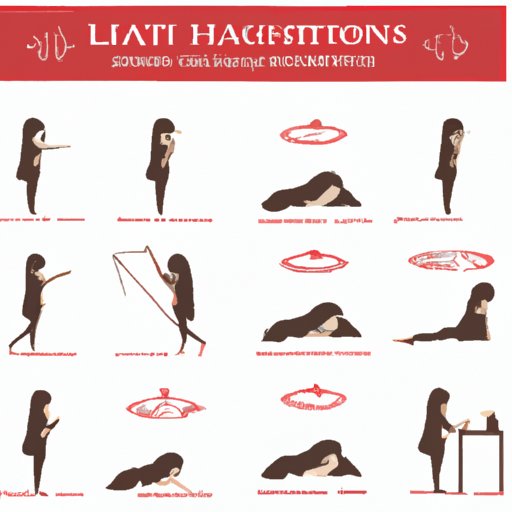Introduction
Do you dream of long, thick, luxurious locks? Fortunately, hair extensions can give you the hair of your dreams! However, before you can start transforming your look, it’s important to understand some key factors about hair extension lengths. In this article, we will explore everything you need to know about hair extension length requirements, from the minimum length for different types of extensions to how to grow your hair out in preparation for installation.
Length Requirements: Explained
When it comes to hair extensions, length is a crucial factor. The minimum length requirements will vary depending on the type of extension you want.
For clip-in extensions, your hair should be at least six inches long. This length allows you to clip in the extensions securely and ensure they blend seamlessly with your natural hair.
Tape-ins, on the other hand, require at least four inches of hair for the adhesive tabs to attach firmly.
Sew-in extensions require the most hair length, ranging from at least six inches for a partial sew-in to 10-12 inches for a full sew-in.
The ideal length of hair for extensions depends on several factors, such as texture and thickness. Coarse or curly hair can appear shorter when straightened or stretched. As a general rule of thumb, you’ll need longer hair to achieve the same result as someone with fine or straight hair. For thick hair, you may need longer extensions to ensure they blend with your natural hair.
Busting Myths About Hair Extension Lengths
There are many myths and misconceptions surrounding hair extension length requirements. One of the most common myths is that you need waist-length hair to get extensions. This is not true! As we explained earlier, the minimum length required for different types of extensions varies.
Another myth is that extensions will always make your hair look longer. While extensions can certainly add length, they can also enhance volume, texture, and even add highlights or lowlights. Ultimately, the effect you achieve will depend on the type and length of extensions you choose, as well as your personal preferences.
Finding the Perfect Hair Extension Length
Now that you know the minimum length requirements, it’s time to determine your ideal hair extension length. Here are some tips to guide you:
1. Measure your hair: Use a tape measure to determine the length of your natural hair. This will help you select the right length of extensions that will blend seamlessly.
2. Consider your lifestyle: If you lead an active lifestyle or love to swim or workout, longer extensions may not be practical. Shorter extensions may be more suitable for your needs.
3. Think about your preferences: Do you want a dramatic transformation, or do you prefer a more subtle look? Are you looking for length or volume? Consider your personal style and preferences when selecting the right extension length.
4. Consult with an experienced stylist: A professional stylist can help you determine the right length of extensions for your hair type, texture, and thickness. They can also offer advice based on your face shape and personal style.
How to Grow Your Hair Out for Extensions
If your hair is currently too short for extensions, the good news is that there are several ways to speed up the growth process naturally. Here are some tips:
1. Eat a healthy diet: Your hair needs proper nutrition to grow, so make sure you’re getting plenty of vitamins and minerals like vitamin D and biotin.
2. Avoid heat styling: Heat styling tools like flat irons and blow dryers can damage your hair and slow down growth. Avoid using them as much as possible.
3. Treat your hair gently: Be gentle when brushing or styling your hair to avoid breakage.
4. Use hair growth treatments: You can use natural hair growth treatments like castor oil or scalp massages to promote hair growth.
The Pros and Cons of Different Hair Extension Lengths
Choosing the right hair extension length is a tradeoff between ease of maintenance, versatility, and cost.
Shorter extensions, such as clip-ins, are very low maintenance and easy to install at home. They’re also more affordable than longer extensions. However, they may not give you the dramatic transformation you’re looking for.
Longer extensions, such as sew-ins, are more expensive and require regular maintenance. However, they give you maximum versatility in terms of styling and can completely transform your look.
Conclusion
Whether you’re looking for length, volume, or texture, hair extensions can help you achieve your hair goals. However, it’s essential to determine the right length of extensions for your hair type, texture, and lifestyle.
(Note: Is this article not meeting your expectations? Do you have knowledge or insights to share? Unlock new opportunities and expand your reach by joining our authors team. Click Registration to join us and share your expertise with our readers.)
